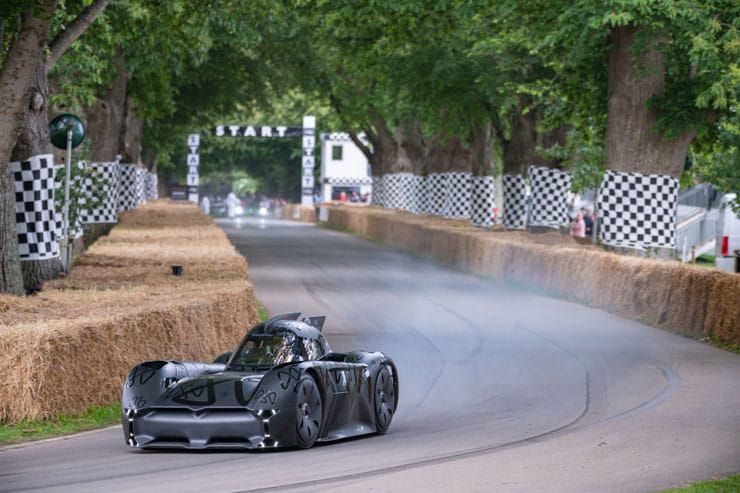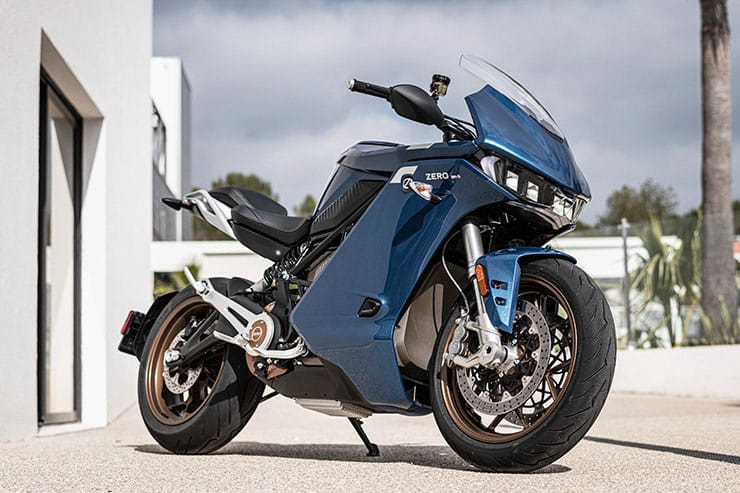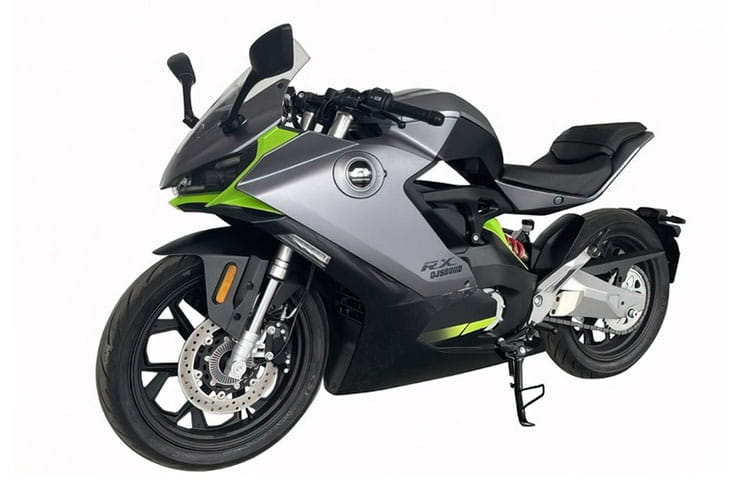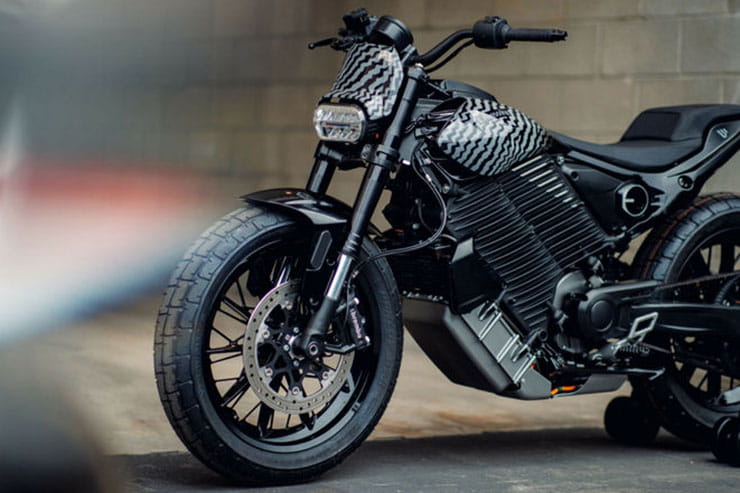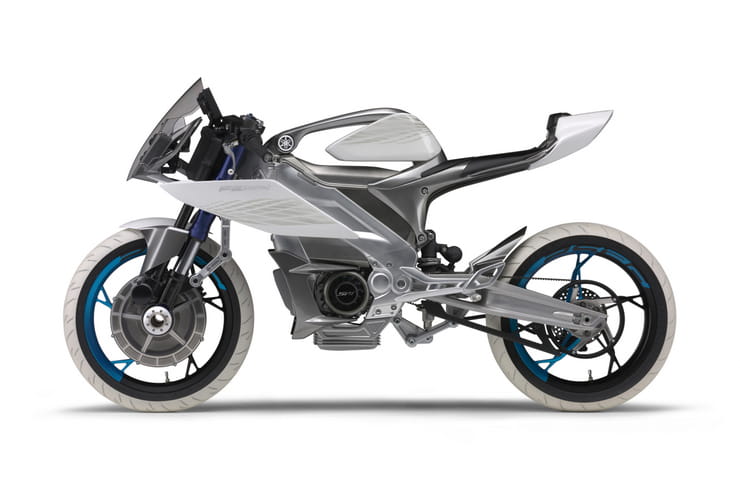Why electric bikes are lagging behind cars
If you paid any attention to the recent Goodwood Festival of Speed, you can’t have failed to notice that electric cars were among the biggest draws. The battery powered McMurtry Spéirling prototype set the fastest time ever up the famous hillclimb route. Porsche’s Cayman GT4 ePerformance – also electric – was second quickest. Elsewhere the BMW i7, Hispano Suiza Carmen, Lucid Air, Mercedes Vision AMG, Polestar 5, Rimac Nevera, Fisker Ocean, Genesis GV60, Rivian R1T and Lotus’s Evija and Eletre drew looks while the Renault 5 prototype showed a more attainable future offering. What they all had in common was their lack of combustion engines. Batteries and electric motors were no barrier when it came to appealing to a ‘petrolhead’ crowd.
Teslas have become a common sight on the road, along with Nissan Leafs (Leaves?) and a growing number of battery-powered machines from mainstream brands like Kia, Hyundai, Peugeot and Vauxhall, while an electric Porsche Taycan Turbo will draw just as many envious looks as a 911.
So where are all the competent, affordable electric motorcycles, with performance and abilities to match their traditional, ICE-powered cousins? Sure, Zero and Energica’s offerings show plenty of promise, but they appeal to early-adopters rather than acting as viable options for riders cross-shopping against petrol bikes.
The McMurtry wowed at Goodwood and beat allcomers to the record – maybe electric motorcycles need an equivalent?
There isn’t a single, clear-cut answer to why electric bikes are lagging in terms of both popularity and abilities when compared to their four-wheeled opposite numbers, but most of them come down to a circular problem – a lack of demand means money is short in the world of electric bike R&D, slowing their development, and the lack of development means it’s taking a long time for electric bikes to appear that can genuinely compete against petrol models.
In part, that’s down to maths. People use cars as commuter vehicles, mums’ buses and grocery-getters, typically covering much larger average annual mileages than bikes. Combined with the fact that a typical petrol or diesel car is thirstier than a motorcycle, that means the extra purchase cost of an EV is likely to be balanced out by fuel savings much more quickly. So, it’s relatively easy to justify a bigger outlay – or more likely, larger monthly payments – for an electric car, since you’ll claw that money back at the pumps (or the plug).
Bikes generally cover fewer miles per year and are naturally more fuel efficient thanks to carrying far less weight than cars. Those factors significantly reduce the fuel cost savings that can be made by switching to electric power.
What’s more, currently, electric bikes are usually significantly pricier than petrol equivalents, much more so than cars. A 110hp Zero SR/S starts at £20k. Petrol-powered bikes with equivalent performance can be had for half that much, or even less. On four wheels, by comparison, the premium for an electric is smaller – a Peugeot e2008 is around £10k more than a petrol 2008, and with less depreciation its monthly cost on a PCP deal is close enough to the petrol version to make it a logical choice if your fuel costs are high enough.
Electric cars, thanks to increased demand, are holding value well – pushing down PCP and lease costs (which are largely based on depreciation rather than total value), further enhancing electric cars’ appeal and making them closer to matching ICE powered cars in terms of cost on a monthly-payments basis. Bikes aren’t in the same position, and in fact the opposite arguably applies – sluggish sales of expensive new electric models has sometimes led to fairly heavy discounting when new, which gets reflected in weaker residuals for used versions of the same bikes.
The fact that electric bikes cost so much more than petrol equivalents is partly down to economies of scale – EV bikes are a growing market, but still tiny compared to ICE – but also because the powertrain of a motorcycle, whether petrol or electric, makes up a much larger proportion of the vehicle as a whole. As a result, the cost of the powertrain has a bigger overall impact on the price of the bike than it does on the cost of a car.
Zero has been ploughing a lonely furrow as an electric bike pioneer for years now and has a head-start on many rivals as a result
The differences between the markets themselves also matters. The vast majority of car buyers – petrol, diesel or electric – aren’t enthusiasts. They pick a car in the same way as you or I might choose a new phone, influenced by availability and appearance as much as by ability.
Electric cars make a fashion statement about tech-savviness and green intentions, one that other people will recognise as they drive by, but even if you buy an electric bike few casual onlookers will notice that it’s any different to an ICE one. The pressure on bike firms is to make EV two wheelers that can stand up on their own merits, without a fashion-based boost.
Riders are, by definition, enthusiasts equivalent to only the most clued-up car buyers. They look carefully at the value proposition that a new bike offers, as well as whether it meets their practical needs, with consideration of whether it will impress their peers or neighbours relatively low on the priority list. At the moment, that works against electric bikes.
All this is reflected in the fact that, in 2021, BEVs accounted for 18.5% of new car sales in the UK in 2021. That’s reflected globally, and means manufacturers are in an increasingly tough battle for supremacy in the electric car market – fuelling additional R&D funding in the knowledge that getting an edge on the competition will be rewarded with huge sales figures.
Electric bikes, by contrast, still only represent around 5% of new bike sales. What’s more, those sales are dominated by the lowest-end machines, even in developed, wealthy markets like ours. Here, just 133 electric bikes in the full ‘A’ licence category (over 47hp) found buyers in 2021, compared to 4789 in the sub 5hp moped class. What’s more, sales of those high-powered electric bikes aren’t growing as fast as those of the cheap, low-performance ones – electric bike sales under 5hp rose 180% in 2021 in the UK, while those over 47hp increased only 37.1%.
Low-cost, learner-legal electric bikes like the upcoming QJMotor RX (above) could be a turning point for the class
What those numbers mean?
There’s a chicken-and-egg situation here. The expense of high-performance electric bikes stymies their sales success, but because they’re made in small numbers they have to cost more to make financial sense for the manufacturers.
For electric cars to get the foothold that they have now, it also a vast amount of investment over a prolonged period. Tesla – the poster child of the electric car arena – didn’t post a full-year profit until 2021, 18 years after the company was founded. Tesla’s vast investment into EV technology over those years was enabled by a combination of factors including government grants and skyrocketing stock market value thanks to speculative investors who made it – on paper – into the world’s most valuable car company in 2020, outstripping giants like Toyota, General Motors and VW despite the fact Tesla’s sales were tiny in comparison.
Tesla’s position in being able to attract such investment has been a remarkable achievement, and one that many others have tried and failed to mimic. Investors have been attracted by a charismatic and outspoken boss in the form of Elon Musk and a constant stream of bold statements of intent from the company (even if its timescales tend to get pushed back and much-vaunted upcoming models like the next-generation Roadster supercar and the Cybertruck have been repeatedly delayed). The promise is that Tesla will eventually grow into its immense stock market valuation, and investors still flock to the firm on that basis.
It's nearly impossible for a bike company to perform the same trick that Tesla pulled off. The pot of gold at the end of that investment rainbow isn’t big enough to attract the sort of speculators that have driven Tesla’s valuation and enabled the company’s own investment into its future.
That means we’re left with motorcycle makers with more conventional funding, where R&D investments have to be justified by the profits from the resulting models. A Tesla-style electric superbike, offering the same combination of cutting-edge tech, incredible performance and worthwhile range at a price that’s within reach of a large number of customers, is a tempting idea but even if a company made such a machine, it would be unlikely to garner anything like the sales figures needed to amortize its R&D investment. It would still lack a convincing saving in terms of fuel costs when compared to a petrol model, the best electric cars can stun drivers with their supercar-beating off-the-line acceleration (thanks to the instant torque of electric motors), motorcyclists are already familiar with having enough accelerative potential to flip over backwards, so there’s little scope to tempt us with the prospect of more instant acceleration.
Ideas like swappable batteries – as in the Honda PCX electric, above – are ones that can work in bikes much more easily than cars
Small electric bikes, not big ones, lead the charge
The sales figures in the UK show that small, low-powered and – vitally – cheaper electric motorcycles and scooters dominate the market for EV two-wheelers. And we’re a wealthy, developed market with a taste for fast, expensive motorcycles. Look at places where riders aren’t so rich – China is the clearest example – and the skew towards cheap EVs is even clearer.
The dichotomy between high-performance and low-priced electric bikes is emphasised by the fact that there’s a new, and rapidly growing, market for battery-assisted bicycles and the UK looks set to legalise stand-up electric scooters with performance low enough to dodge inconveniences like licences, helmets, road tax and insurance. These machines – already sold in huge numbers despite not being legal to use in public outside limited trial schemes for rental scooters – can be made using technology that’s little more advanced than that of a cordless drill, making for a new generation of ultra-cheap, last-mile electric transport with minimal technical demands for range or performance. The likes of Honda (and various other car and bike companies) are already well on the way to pursuing a slice of the action, and Yamaha has spent decades making battery-assisted bicycles, suggesting that this is a field that offers more profit potential, at least in the shorter term, than that of high-performance electric bikes.
There’s also an issue of brand identity at stake when developing bigger, more expensive electric bikes. For decades motorcycle companies have used their engines as a touchstone. Harley is synonymous with V-twins, for instance, and Ducati’s switch from two-cylinders to four for its superbikes was a controversial move among the fanbase. Honda is arguably renowned more for its four-stroke engine technology than anything else. Cars, in contrast, have always hidden their engines, and there’s never been much concern about what’s under the bonnet as long as it does the job. There’s long been a tradition of buying-in engines from rival companies if needed, and most owners don’t know or care if their Mercedes A-Class has a Renault engine or their BMW 1-series has a Peugeot lump. That doesn’t happen much in motorcycling, even when there are remarkable similarities between rival companies’ requirements. It would make a lot of financial sense for the likes of Honda, Yamaha, Suzuki and Kawasaki to team up when developing a 1000cc superbike engine, for instance, but each firm wants success with its own design.
The move to electric power eliminates that source of brand recognition. One electric motor is much like another and that means bike companies need to find alternative way to stand out from the competition.
The structural battery pack of the upcoming LiveWire S2 Del Mar illustrates further bike-oriented electric tech
Why not just borrow the tech from electric cars?
While much of the tech that does appear in the most expensive electric bikes can be linked to ideas used in cars it’s not a straightforward case of transplanting car components into a motorcycle.
The electric motors and batteries that have been purpose-developed by leading players in the electric car market – Tesla, for instance, or Porsche or Kia/Hyundai – are created purely with four-wheelers in mind. The motors might be compact compared to similarly powerful petrol engines, but they’re too big and heavy to be much use in a motorcycle, and while the individual cells inside the battery packs are fairly standard components, their packaging and cooling is built around the demands of cars. The ideas can be copied for electric motorcycles, but that still means developing miniaturised versions – easily accounting for the multi-year lag in electric motorcycle technology compared to cars.
And the tactic of borrowing electric car tech isn’t necessarily the right one, either. Most electric car makers, for instance, have converged towards the idea of large, flat battery packs mounted in the floors of their vehicles. That’s a concept that can be borrowed for scooters – and has been, in the case of machines like BMW’s CE-04 – but not one that’s particularly suited to sportier motorcycles. Car makers want a low centre of gravity, but that’s not necessarily a boon for bikes.
On two wheels, we’re increasingly seeing the battery of future electric sports bikes being used as a structural, central components – essentially doubling as the frame, with small subframes front and rear for the steering head and seat. LiveWire’s new ‘Arrow’ platform, used in the upcoming S2 range, illustrates this thinking, and the planned Can Am electric bikes from Bombardier will do the same. CFMoto’s 300GT-E and the Damon Motors Hypersport and Hyperfighter also take that route, and all indications are that when BMW launches its ‘DC’ range of electric motorcycles it will also go down that path.
Meanwhile, others – largely firms making smaller electric bikes – are going for swappable batteries, either under the seat or mounted under the tank. The Husqvarna e-Pilen looks likely to go this direction, along with the KTM e-Duke that will share its underpinnings, and Honda is a strong proponent of the battery swap idea for electric scooters. In Taiwan, Gogoro has already proved that swappable batteries are a goer provided you can build a good network of battery-swap stations.
Yamaha’s PES2 concept, shown way back in 2015, hinted at the potential of electric motorcycles by using twin motors and 2wd – tech that would be near-impossible on an ICE machine.
Good things come to those who wait…
The point is that the technologies coming to a future generation of electric motorcycles are ideas developed specifically for bikes, rather than ones that have been lazily ported from cars.
Going forward, that’s a good thing: todays bikes share little with cars, and thanks to the different requirements and lower production volumes, they’ve been slow to adopt technology that’s pioneered on four wheels. ABS and traction control were long established in cars before making the wholesale switch to bikes, and the same has applied to things like cruise control, electronic throttles, even radars. Where those things have made the leap from cars to bikes, they might have come late but they’ve been developed specifically to address the demands of motorcycles, ensuring they work properly in a motorcycle setting. That’s a good thing, even if it means we might have to wait a few years to see the tech from the latest electric cars reaching bikes.



